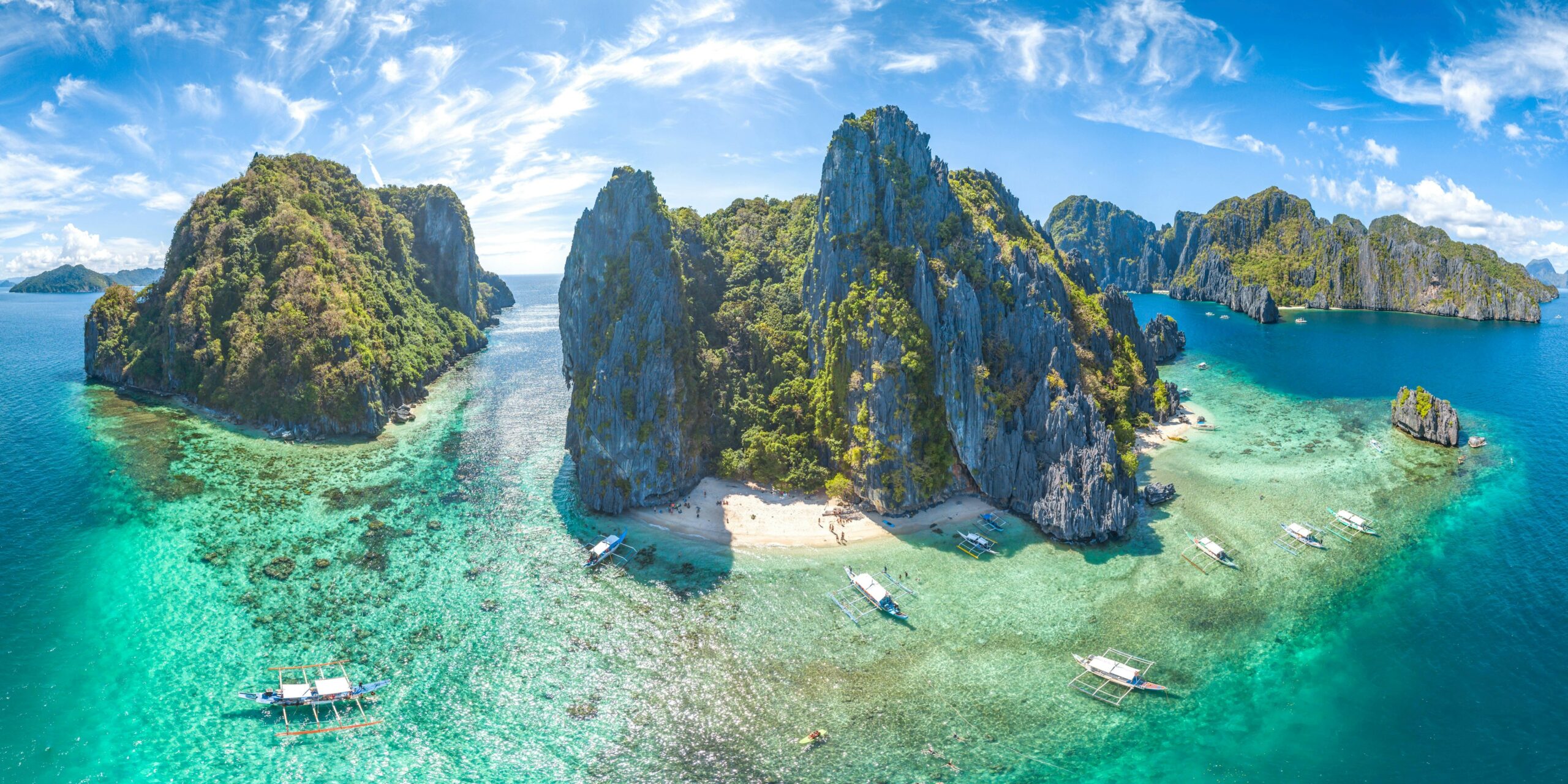The Philippines is a relatively easy travel destination by Southeast Asian standards. English is widely spoken, and the country has an endearing don’t-worry-be-happy vibe, soothing for first-time visitors. However, volatile weather and natural disasters can disrupt trips in a hurry, while a menu of over 7000 islands can create itinerary headaches for even the most seasoned travel planners. Increase your chances of a smooth trip by avoiding these common first-timer fails.
Fail #1: Buying Into the Fear Factor
Some friends may have warned you about the dangers of traveling to the Philippines, leading you to book an all-inclusive resort and not venture out at all (or worse, deciding against the trip altogether).
This is a big mistake. The Philippines holds an unjustified reputation for being a ‘dangerous’ place—a myth fueled by frequent Western embassy warnings and some cautious Filipino expatriates. In reality, the Philippines is as safe as anywhere in Southeast Asia. Although there has been violence in certain remote provinces of Mindanao, it seldom affects tourists or spills into other areas. Therefore, while staying informed with the latest travel advisories is wise, once you arrive, you’ll likely be glad you didn’t let fears hold you back. Relax and explore!
Fail #2: Neglecting to Study the Weather
Imagine arriving and spending your entire vacation battling epic monsoon rains—hardly the idyllic getaway you’d envisioned.
A common misconception is that the Philippines has the same weather throughout. However, it has four distinct climate zones. Carefully study the regional forecasts, research when to go, and choose your destination accordingly. Notably, Manila experiences a severe wet season from July to September, while many other regions remain dry during this time.
Typhoons are another unpredictable challenge. These storms can affect large areas of the country and occur outside the typical ‘season’ (approximately June to December). Keep watch on websites like Typhoon2000 to ensure you’re not heading into a storm and reroute if necessary.
Fail #3: Overplanning
The first travel rule in the Philippines? Assume things will go off course. Boat and bus schedules are notoriously unreliable and can change at a moment’s notice. Weather can derail your best-laid plans, or perhaps the beach you hastily selected simply wasn’t to your liking.
Stay flexible to easily shift your plans if necessary. Outside of the ‘super-peak’ periods (New Year’s and Easter), finding a room is generally not difficult, and you’ll typically get better hotel deals at the last minute. Boat and bus tickets can almost always be purchased at the station just before departure, while numerous domestic budget airlines offer affordable flights even close to your travel date.
Fail #4: Dismissing Karaoke Skills
Karaoke is the national pastime in the Philippines, and sooner or later, you’ll find yourself with a mic attempting to sing ‘Yesterday’ or ‘My Heart Will Go On’. Don’t stress about sounding off-key—Filipinos are not judgmental about singing and will appreciate your effort at cultural immersion.
Of course, this mutual respect goes both ways. Experienced karaoke enthusiasts should refrain from mocking those with less talent. Karaoke is a serious source of fun, so enjoy the experience while being respectful.
Fail #5: Losing Your Cool Over Extra Pesos
Like in most Asian countries, raising your voice or showing anger in the Philippines can cause both parties to ‘lose face’ and lead to misunderstandings. Traveling in the Philippines is among the most cost-effective options, especially in comparison to Europe and the US. Fixating on whether you’ve overpaid for transport or accommodation after negotiating what amounts to just a few dollars is hardly worth the stress. Therefore, if a taxi driver asks for an additional US$1 to US$2 during a busy Manila rush hour, which is common elsewhere, consider simply paying and maintaining your composure.
Fail #6: Arriving On Time for Social Engagements
If a friendly local invited you into their home for dinner but you showed up right on time, you might notice a shift in their demeanor.
This happens because arriving punctually is considered impolite in the Philippines. If you do arrive on time, it’s not unusual to find yourself alone while your host seems unprepared. Consequently, about 15 minutes late is considered a socially acceptable arrival time.
Fail #7: Assuming Private Accommodation is a Better Deal than Hotels
In an effort to save money, you might pay US$50 for an Airbnb in Quezon City, a distant suburb of Manila.
This assumption can backfire. Don’t expect Western prices in major urban hubs like Manila and Cebu. Accommodation in Cebu offers excellent value, generally ranging from P1500 to P2500 (US$30 to $50) for mid-range options. Manila prices are slightly higher, about P2800 to P3200 for a decent room. Additionally, Manila can be overwhelming for first-time visitors, so having a concierge can be beneficial instead of navigating a private apartment on your own.





